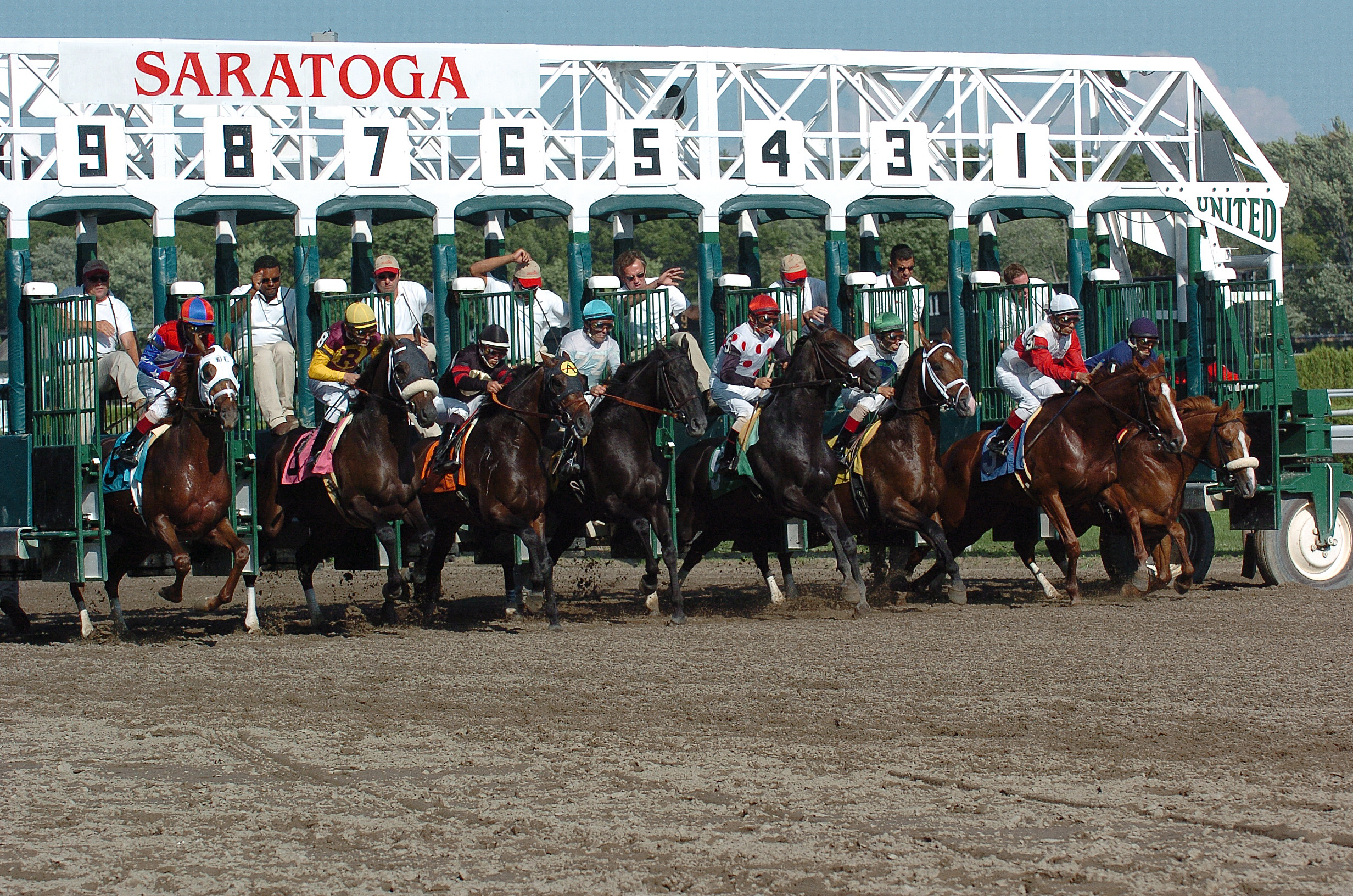
People You Should Know
This category, “People You Should Know in Racing,” is really a subdivision of Racing 101. The people in racing whose jobs we’ll discover are essential to the smooth and safe operation of a racetrack, a Thoroughbred breeding farm and other industry-related businesses. Their jobs are essential–so you should know about them.
But precisely because they’re so important, I decided to give them their own category here on Saratoga.com. As you read through the entries and meet these extraordinary humans who go to work every day and make the sporting world go ’round–you may gain new perspective. You will come to respect and admire someone whose very existence was, just yesterday, below your radar.
You may even find your own vocation, your calling.
At the very least, I’ll use these pages to introduce you to folks who are so darned good at their jobs that too often they become invisible. Like actors who convince you that they’re not acting–these people are so good at what they do, and they move seamlessly through the workday–and most of the time we, the observers, don’t notice them.
We hope you enjoy People You Should Know, and that, if you don’t already–you come to understand more fully how much it takes to get a horse to the racetrack, and to run that track smoothly. I hope that you will walk up to someone who works in one of these jobs, and that you will thank her or him for performing a vital service. And I hope that you stop and look around the next time you go to the races, and realize that, truly, it takes an entire city, perhaps a small constitutional monarchy–to make this sport happen, day-after-day, week-after-week, year-after-year. (For 141 years here in the United States, so far.)
Please enjoy this new category, and do send in your comments. If you know of someone or a group of someones in racing who should be acknowledged–drop me a line. I’d love to do the research and give kudos to those who deserve it. Your input is valuable to us, as are you and all the amazing people who make Thoroughbred racing happen.
And now, for our first entry in this category, we ask you to hold your buddy’s hand, and slip into a hole in the six-ton starting gate. You’re about to encounter the Cowboys of Horse Racing. Ready, set–run!
The Cowboys of Horse Racing: Introduction to a Little-Understood Profession
Our English language doesn’t provide enough adjectives or superlatives to describe the men of the starting gate. I could go through the Merriam-Webster for days, and not be able to conjure enough descriptive words to do justice to those for whom lightning-fast reflexes; an eye for trouble and intuition are just some of the tools necessary to do their daily jobs. I am in awe of the Head and Assistant Starters at our New York tracks–and racetracks the world over.
“They’re at the Gate”
In one respect, Saratoga Race Course is very similar to every other racetrack in the world.
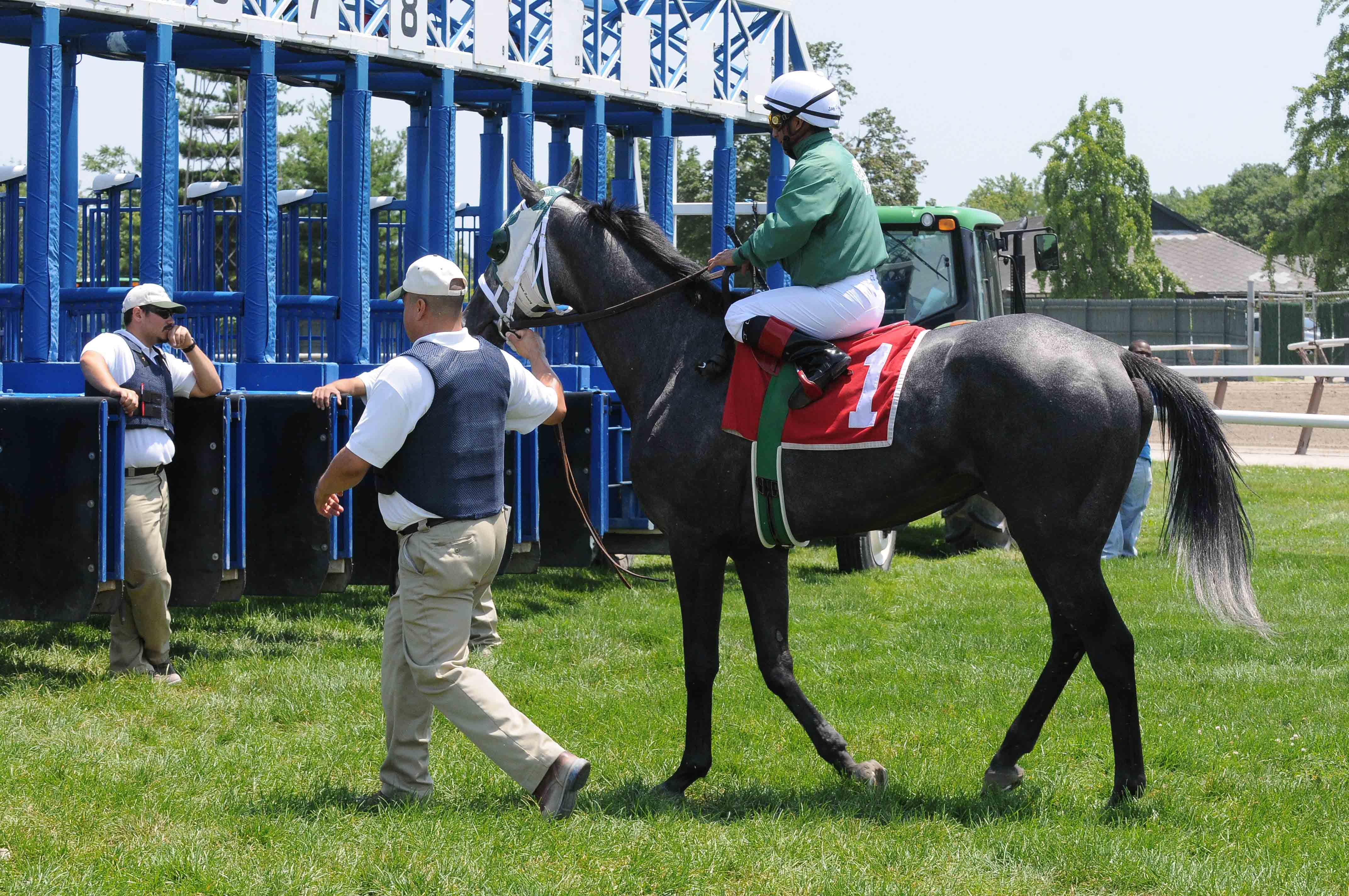
The Bugler plays “Call to the Post,” and the horses start moving from the paddock toward the starting gate. The horses go into the gate, and burst out the other side, pounding hell-bent-for-election toward the finish line.
This ritual is played out thousands of time a week, at racetracks all over the world. It always looks beautiful, elegant, colorful, graceful and calm.
That is, unless you know what’s really happening. Like many other fans and newbies, you may think that the horses just glide up and put themselves into the little compartments of the 12,000-pound cast iron and electromagnetized gate. All of Nature seems to play a role in the age-old drama: the sky is blue, the clouds, puffy. Sun shines, and there’s the slightest breeze. All very natural–why, it must just happen all by itself. Thoroughbreds must be born knowing to play out their role in the ritual.
Uh, no.
Baby Steps
It took a great amount of work, time and insight to get each of those horses to the gate, never mind into it. An entire process, involving repetition, patience, kindness and compassion had to occur over a period of days, weeks and months before the horses would be ready to enter the gate and come exploding out of it, safely.
The first step involves introducing the horse to the starting gate as a concept. Horses, especially Thoroughbreds, are claustrophobic. They detest tightly-enclosed spaces. Confining a horse to a 12′ x 12′ stall is challenging enough for the horse’s psyche: shrink that space down to about 2.5′ wide and 8′ long–and you have the potential for a horse who loses her mind, and injures or kills herself and everyone around her.
The Process, Pared Down
Gate Training is the process by which Thoroughbreds are introduced to the starting gate and being “certified,” as it were, to be in a race.
Depending on the age, temperament and learning curve of the horse, the process generally involves first, just walking the horse up to the gate. That’s it. Just showing the gate to the Horse:
“Here, Horse: this is the starting gate.”
A series of similar introductions, involving hand-walking the horse into the open gate, then walking in with a rider on back. Then closing the front of the gate, and standing in that tight, enclosed space.
“Calm, calm, it’s OK, Horse.”
Next will come opening the front of the gate, and walking the horse out of the front. Then opening the gate as it would in a race, and galloping out of the gate.
These steps all lead up to a horse earning her gate card, the certification that s/he has successfully passed all the steps necessary to be in a race that begins in the gate.
The day of a race, the process all goes so smoothly that we never think about the many days and series of logical steps it took to get the horses–hundreds of them a day–into and out of the gate without incident.
We laypeople don’t give it a thought–all we see is the end result: ethereal horses and the brilliantly-attired jockeys politely taking turns going into the gate, then exiting with an explosion of joy and archetypal equine spirit. Pegasus is reborn a hundred times over, every day of the year.
Gate Training: either we don’t know about it, or give it much thought–and yet it is one of the most crucial aspects of training a Thoroughbred.
This job is just one aspect of the many duties performed with profound respect, love and insight by the strongest and bravest men in the entire sporting world–the men of the Starting Gate Crew.
The Cowboys of Horse Racing: Teachers, Trainers, Lovers and a Horse’s Best Friend.
Every Crew Needs a Fearless Leader
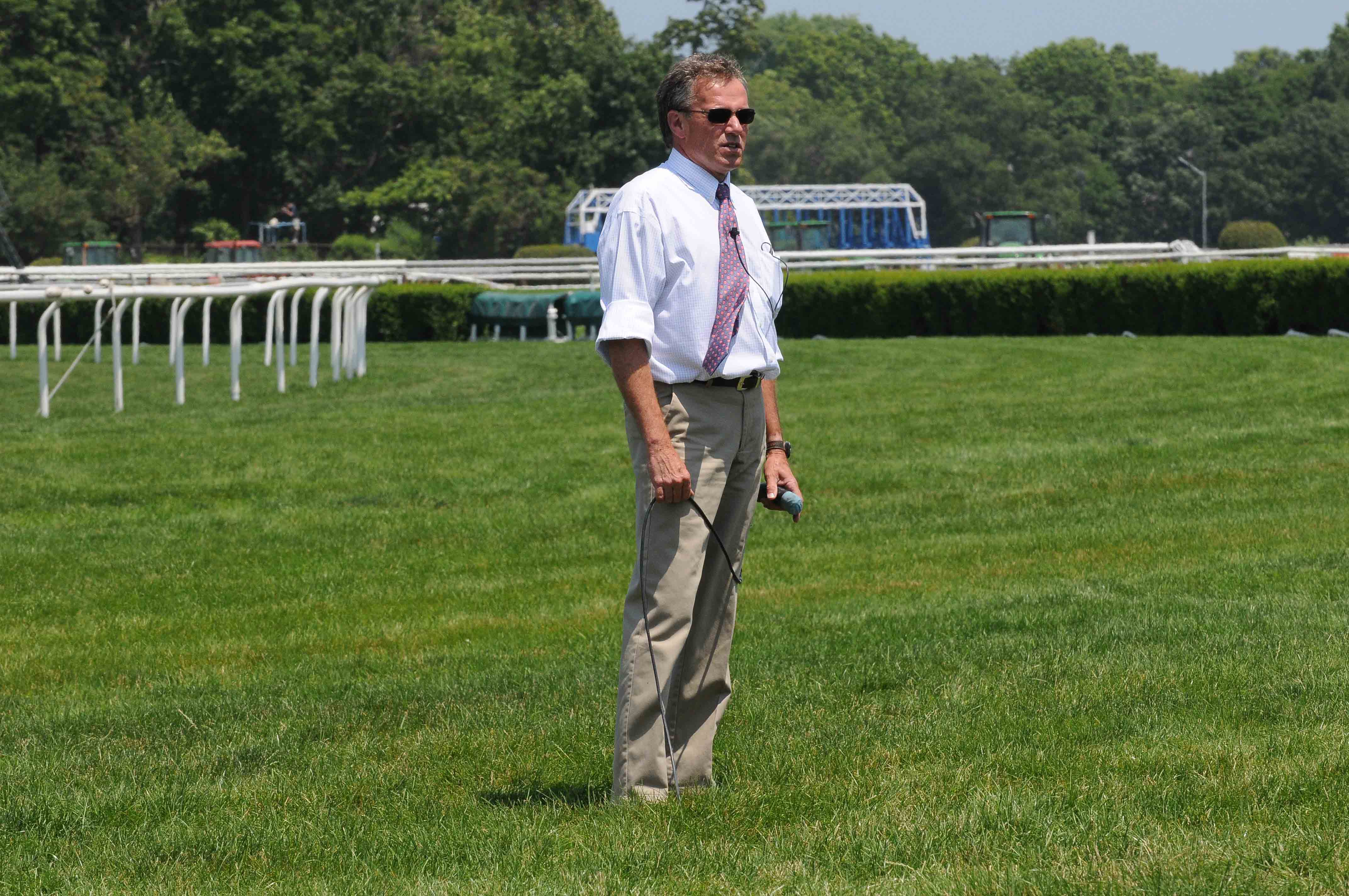
The Assistant Starters and Head Starter are the people who are at the track at 6:30AM for gate training. After a full morning of walking, gate introducing and gently gaining the trust of the horse–for a horse won’t do anything for someone s/he doesn’t trust–they get a bit of a break, then head back to document and discuss the horses on the day’s race card.
The Head Starter at the three New York racetracks (NYRA: Saratoga, Belmont and Aqueduct), is the brilliant, openhearted Roy Williamson.
Roy was named Head Starter in August, 2007, and immediately brought into the role his insights from 22 years as an Assistant Starter. He worked most of those years with Bob Duncan as Head Starter. (Bob served in this capacity for many years, himself: he’s a Guru of the Gate, respected and loved by everyone whose horses he’s handled.)
The two men, good friends and mutually respectful colleagues, created the NYRA way of gate training and working the gate at races. Roy, who knows horses intuitively and loves them with deep, spirited insight, had observed and studied Pat Parelli, a renowned proponent of Natural Horsemanship.
The concept behind NH is that–and this should be so obvious, shouldn’t it?–you get more from a horse by cooperating with the horse, than by dominating and frightening the horse. Yes, a horse will look for an Alpha, a leader. But the Alpha is best established between human and equine by reading the horse and her/his needs–and responding to that need. Once you assure a horse that s/he is always safe with you–that horse will do anything for you. It’s not necessary to intimidate and beat a horse into submission: equines are prey in the food chain. Predatory behaviour only inspires the flight instinct in a horse–it will never create a genuine bond between horse and Alpha-by-force.
So Pat Parelli and his wonderful method of cooperating with the horse; reading the horse’s needs and responding to create a relationship–results in happy horse, happy human. It’s a lot easier to work with a being who has a mind of her/his own than to attempt to force cooperation. (“Forced Cooperation” is an oxymoron, isn’t it?)
Roy Williamson brings to his job all the personal, intellectual and spiritual aspects necessary to utilize Natural Horsemanship and watch it work beautifully. The horses, whether in gate training in the morning or escorted into the gate in the afternoon–are in the safest, most caring hands in the world. Roy as Head Starter presents an example of the Consummate Horseman–and his men live up to that, for the very lives of many horses and humans depend on it.
The Most Dangerous Job in Sports–Believe it.
If it seems that I’m gushing or am overly fond of the men of the starting gate, I assure you–I’m reporting the facts. Their bravery and (inner and outer) strength are not a matter of opinion. A few years back, ESPN did a piece on those who work the starting gate at a racetrack, and one of the things they reported is that the job of being an Assistant Starter, as they’re called, is the most dangerous job in sports.
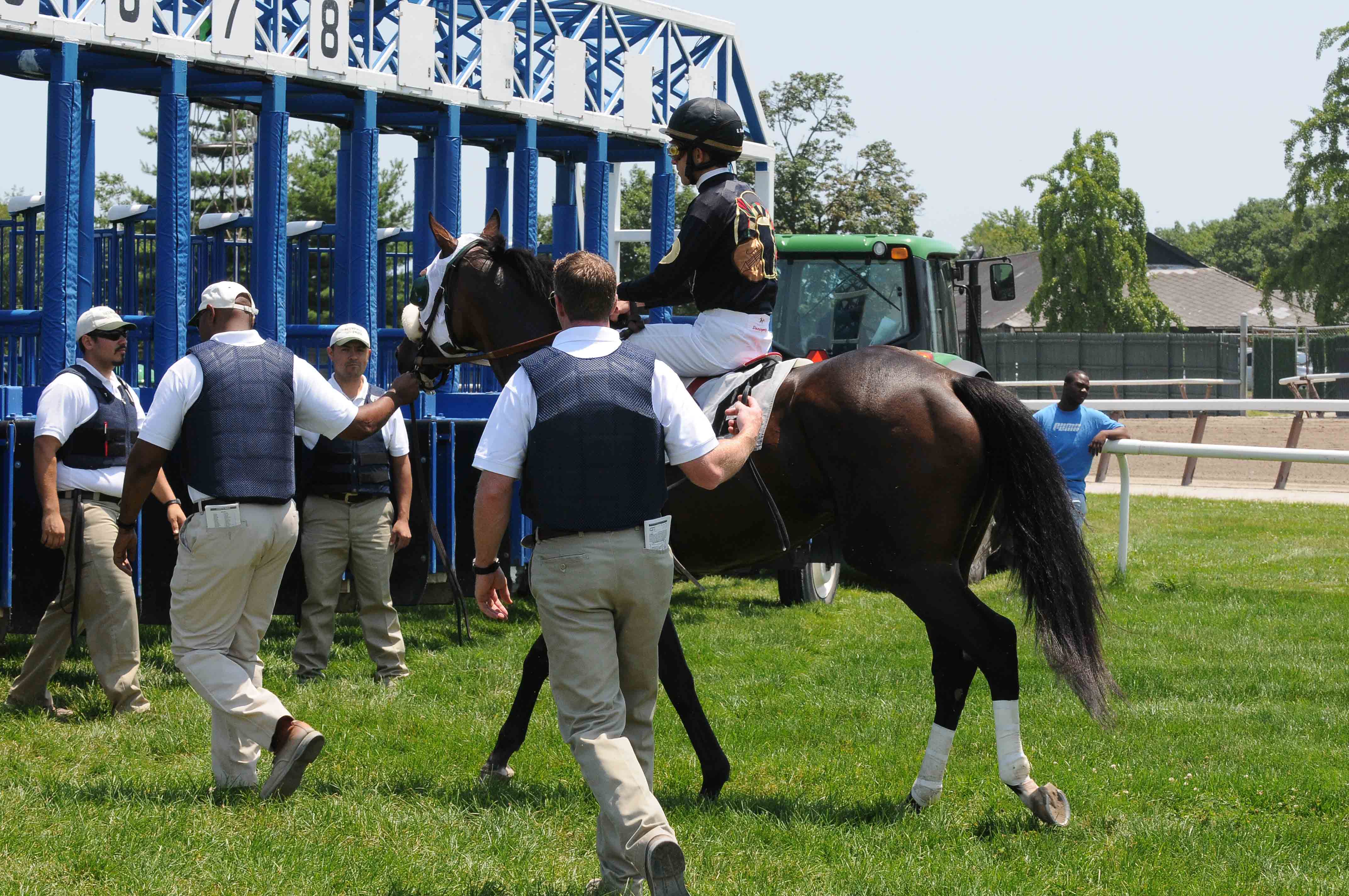
That’s heavy: a Starter’s daily “routine” packs more danger and potential for, oh, death, on a regular basis than that of being a NASCAR driver.
Every day these brave, remarkable men handle horses who weigh up to 1,200 pounds. Many of these horses are scared–and a frightened animal is a potentially lethal animal. A Thoroughbred, rearing up on her hind legs, stands about 12′ tall. Those beautiful hooves, which cover ground so swiftly when going straight–can become weapons. The job of the Assistant Starters is to not only calm down the horse, to get her safely into the gate–but then to jump into the individual space with that horse and the jockey atop.
Once in there, they stand on a ledge that’s about 3″ wide. Three living beings in one very narrow, extremely claustrophobic space, for a split second–then the electro-magnetic gate doors slam open, and horse and rider are off like a bullet. (Literally, the collective adrenalin and suddenness of the magnet releasing the gate, in concert with the horse’s mighty hind legs, act to propel them out of the gate in a very similar fashion to that of a bullet from a gun.)
If an Assistant Starter doesn’t let go of the horse in time, he can be dragged out of he gate and perhaps killed. The jockey may be pulled off, and the horse left, riderless, to fend for her/himself. The safety of horse and rider, and the uneventful start of a race, all depend on the swift, centered actions of that third being in the gate.
“Routine” to Them, Amazing to Us
Day in and day out, a starting gate crew does their job with such aplomb, calm and
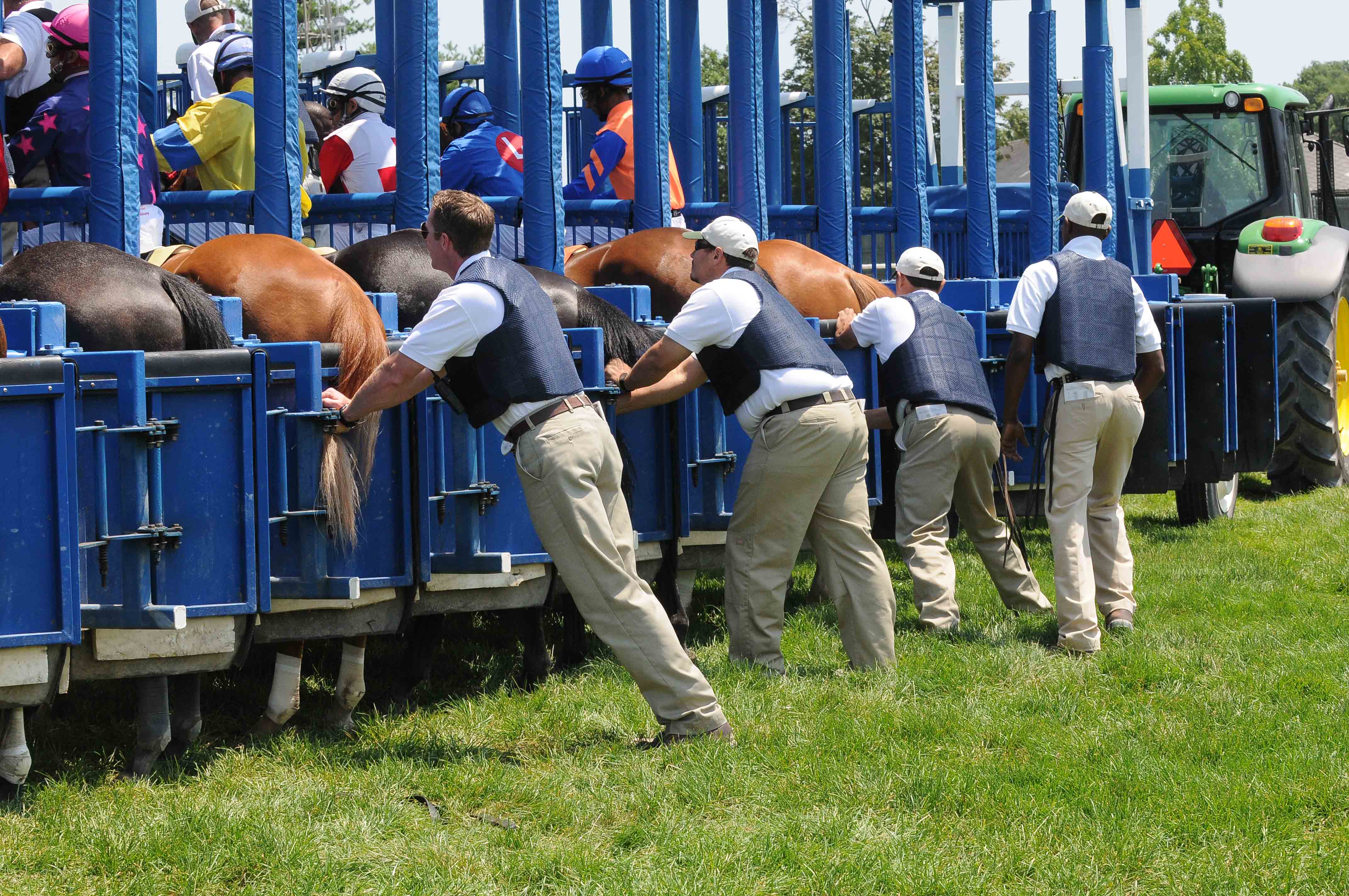
confidence that it’s difficult to realize that, indeed, their jobs are as potentially treacherous as ESPN says.
Their typical raceday begins at 11:30, when the Assistant Starters sit down with Roy Williamson to carefully go over every horse who’ll race that day. (Remember, this is after a full morning that began at 6:30.) Roy has a binder, in which he’s made notes about each horse who’s gone through gate training. (Horses can’t race without first getting that gate card.) Using the day’s program as reference, he’s made notes about every horse who’ll run, and passes these notes on to the Assistant Starters. They mark their own programs for every single horse, and are assigned their horses for the day. (Contrary to what it may seem to outsiders, the crew members don’t just randomly grab a horse when they approach the gate before a race. It’s all been planned in advance by Roy, according to equine and crew members’ temperaments, skills and personal strengths.)
After assessing and assigning the horses for the day’s races, the crew may get a few minutes to grab a bite and to get focused for the work ahead. The horses approach the gate for the first race of the day–and the crew is ready.
Donning flak jackets (to prevent crushed organs in the event of being kicked in the chest), they swagger out onto the track, leather lead in-hand or hanging from their belts. Women sigh, men wish they knew their secret. Approaching the gate, they hope for the best day and wisely anticipate possible disaster.
All-in-All…
A race card may feature ten contests for the day. Regardless of how many races, the team that mans the starting gate at a Thoroughbred racetrack is ready for whatever comes up. Deep knowledge of each horse; hands-on experience with the equine contenders and the detailed notes of the Head Starter prepare the crew for whatever glitches or malfunctions may occur.
The key to success for the gate crew is that, as relaxed and random as it may look–it is anything but. A carefully choreographed ballet in which every dancer has studied their steps beforehand makes for an exhilarating, blood-pumping experience for fans.
And you thought that it all “just happened” by some miracle of good manners and genteel sportsmanship, eh?
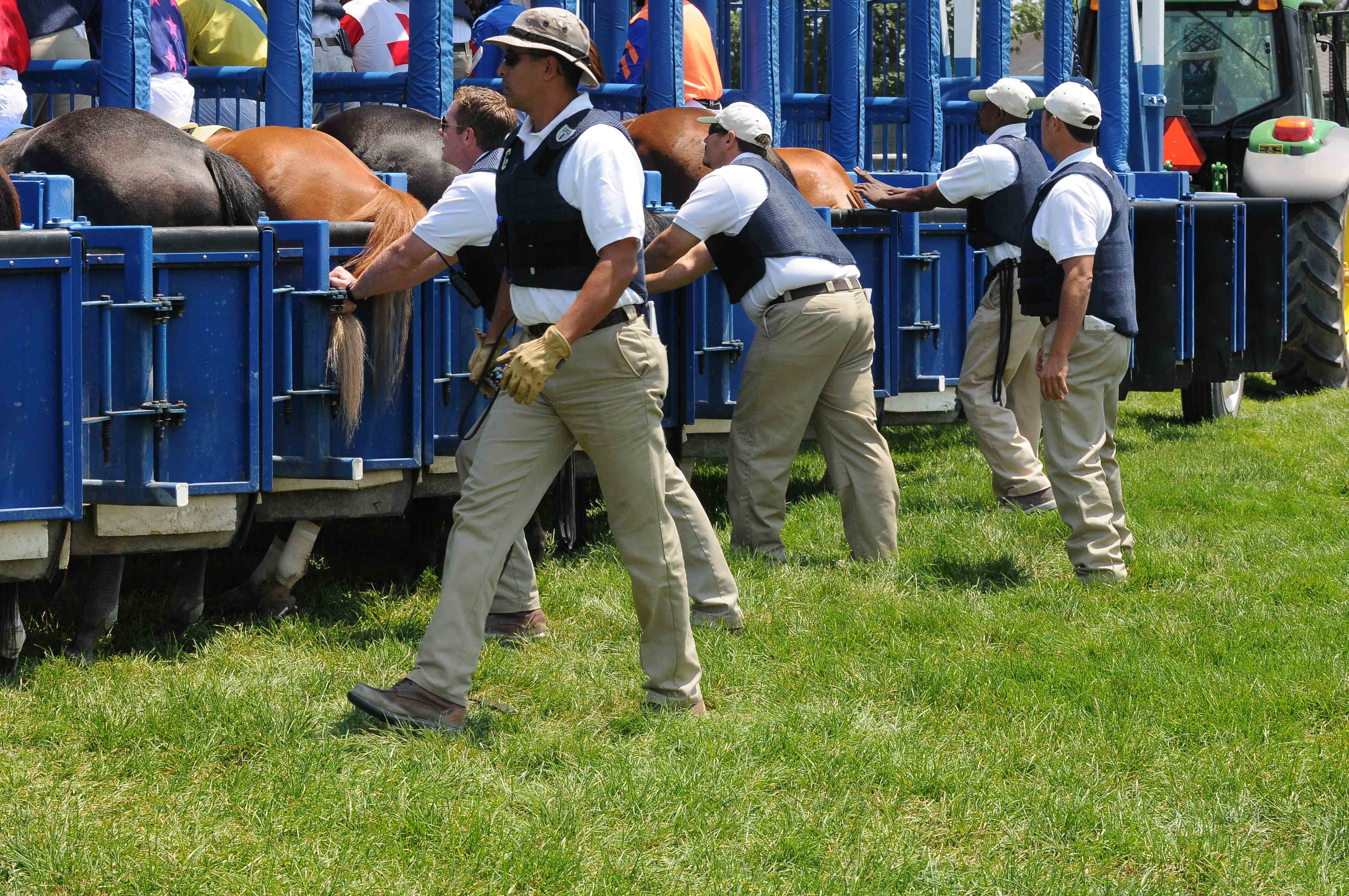
Post Script: Our Homeboys
Now, I don’t know anyone who works in this job at any other racetrack–only the gorgeous NYRA Starters are within the circle of my acquaintance. Roy leads his team of good men, brave souls who fit every possible description: Black. Latino. White. Tall. Not-as-Tall. Buff, all. They go by names like Bob, Eddie, Gus, Kenny, Jose, Kevin, Antonio and Butch. They wear chaps and jeans, or the standard khakis with their white polo shirts and flak vests. They are married or single. They have homes, and lives, and children and they just happen to perform the most life-risking job in the entire world of professional sports.
They all smile broadly; laugh easily and take their jobs very seriously. But they’re consummate professionals, all, so they give the appearance of taking it all in stride. For these reasons my comrades and I call these great men the Cowboys of Horse Racing.
************************************************************************************************************
CREDIT for all photos: Thank you very much to New York Racing Association (NYRA)/Adam Coglianese for allowing us to use your beautiful photographs.

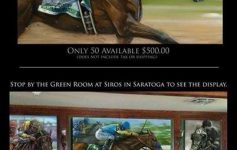
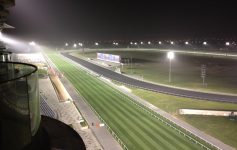
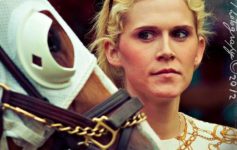
Would you like to come to the track and do an interview about this article with the possibility of more interviews depending on the outcome?
I was looking for info for radio show (local station to saratoga county)and thought you might tell the story better. Interested?
Hi, D. Rinaldi,
I’m so glad that you read the article–and any others that you may have read. Thank you for leaving a comment–do contact me anytime. I tried to email you from my phone, not sure if you got it? Thanks–talk to you soon.